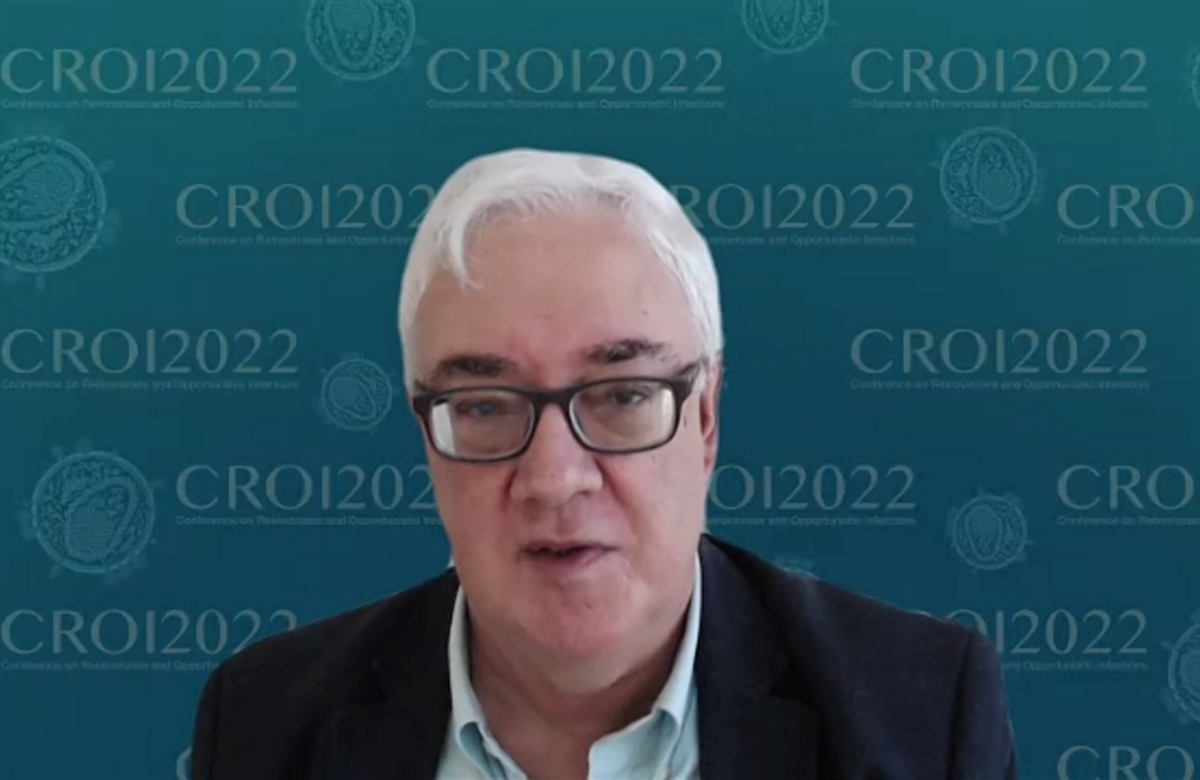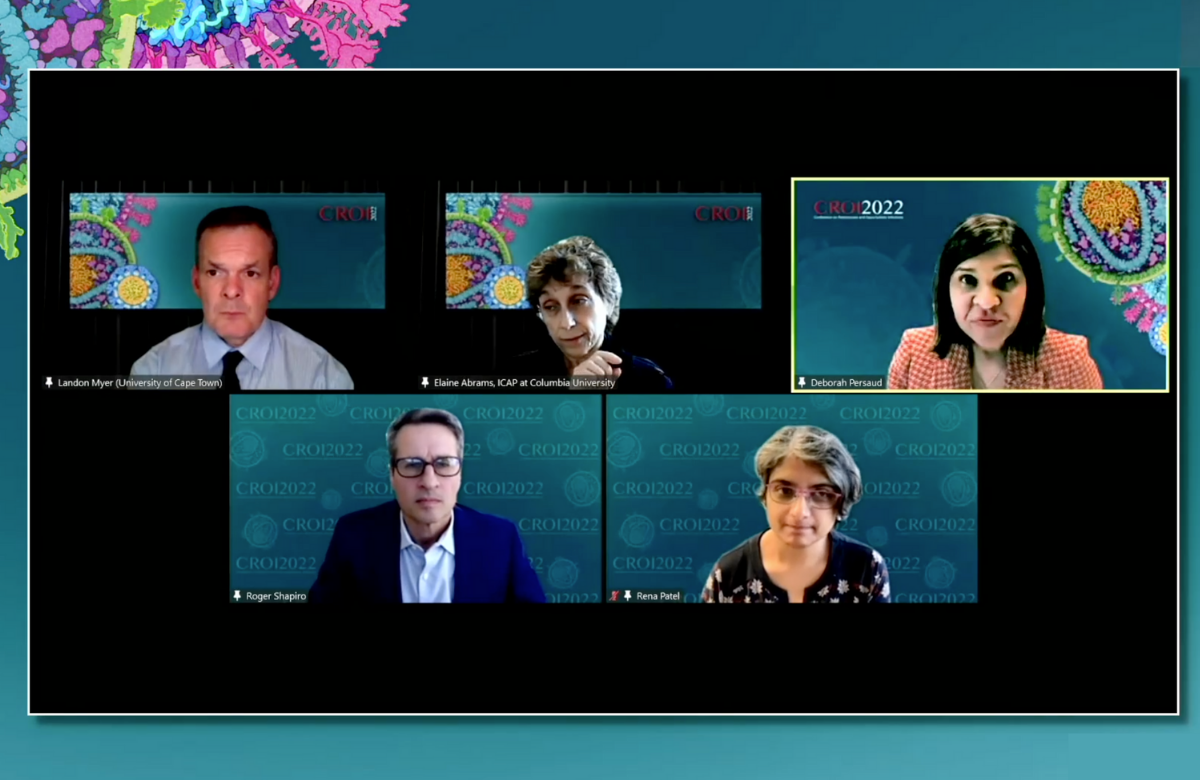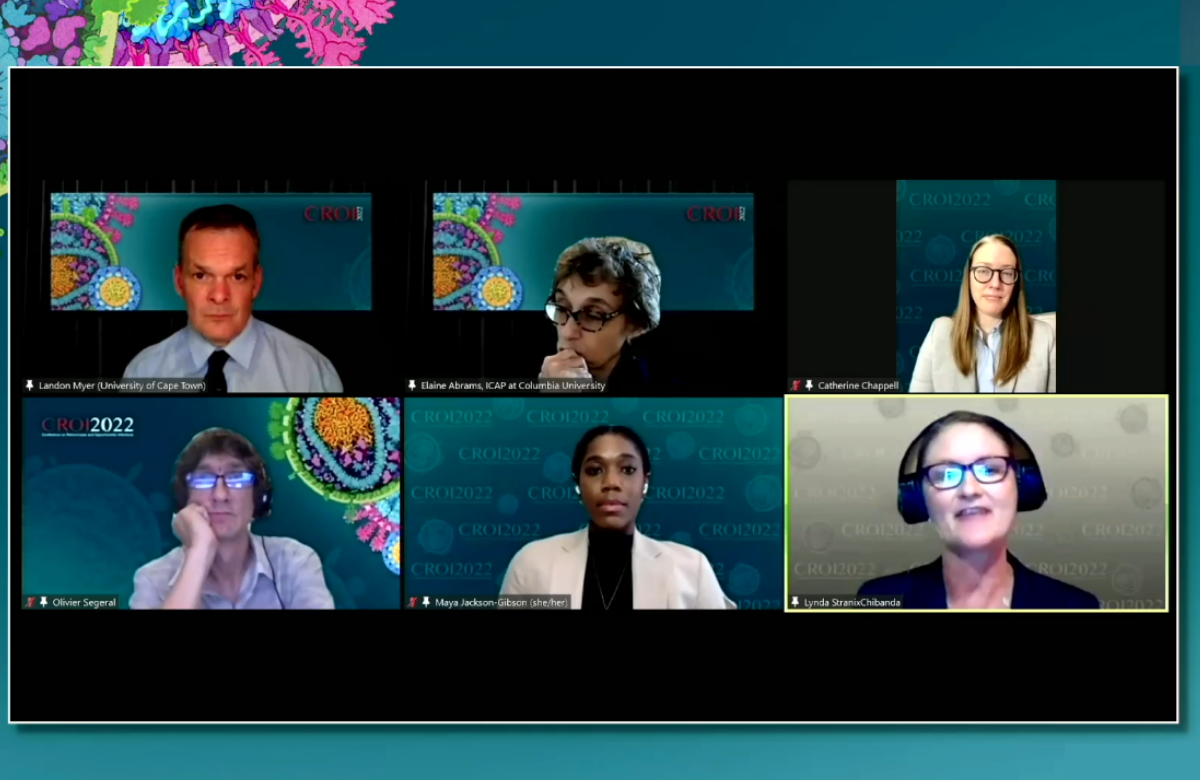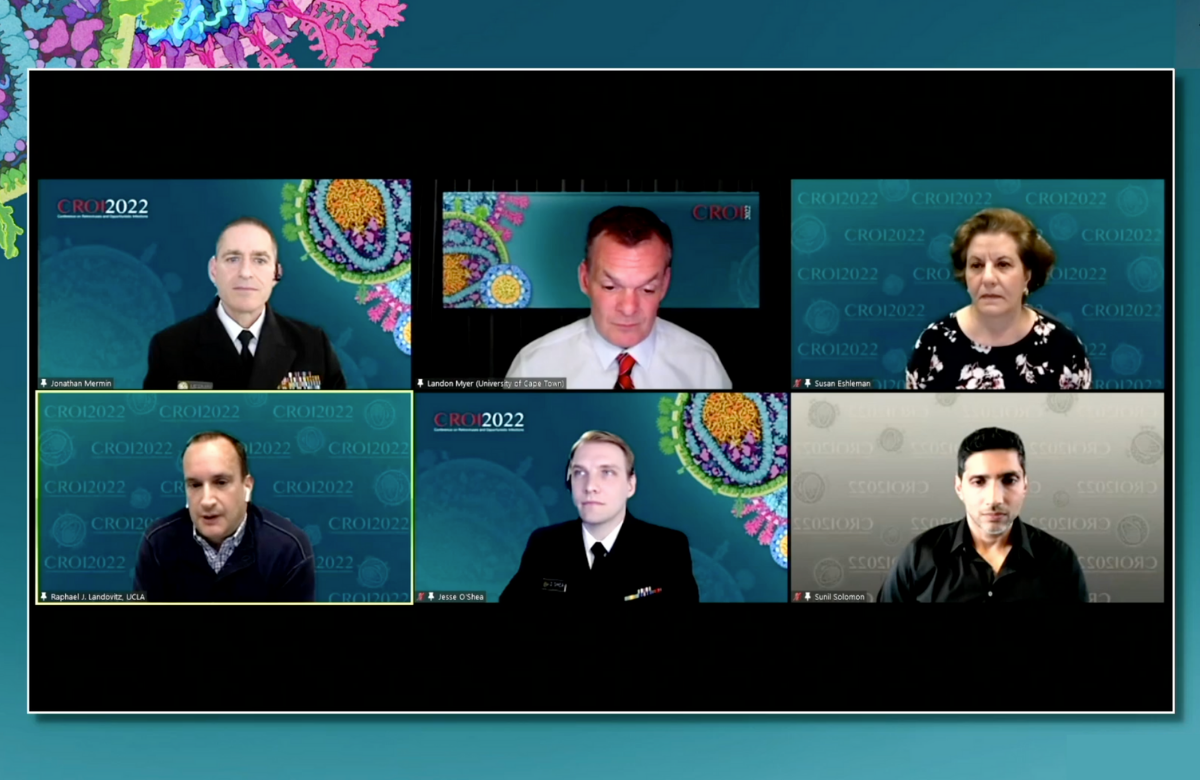Screening and early treatment reduce anal cancer in people with HIV

The results were presented this week to the Conference on Retroviruses and Opportunistic Infections (CROI 2022).
The incidence of anal cancer is higher among people living with HIV than in the general population. Like cervical cancer, anal cancer is caused by human papillomavirus (HPV). The virus triggers abnormal cell changes that can progress to precancerous dysplasia (known as high-grade squamous intraepithelial lesions, or HSIL) and invasive cancer.
Screening and early treatment have dramatically lowered the prevalence and mortality of cervical cancer, but these interventions are not the standard of care for people at risk for anal cancer. The reason, Professor Joel Palefsky told the conference, has been lack of evidence that they would work.
The ANCHOR trial (or Anal Cancer HSIL Outcomes Research) enrolled people with HIV aged 35 or older in 15 US cities. Between September 2014 and August 2021, 10,723 people were screened for HSIL using anal Pap smears (cytology) and high-resolution anoscopy. If HSIL was suspected, a biopsy sample was collected.
More than half (53% of men, 46% of women and 63% of transgender people) were found to have HSIL, and 17 were diagnosed with pre-existing anal cancer.
Participants with HSIL were randomly assigned to either receive immediate treatment – most commonly procedures that use electricity or heat to remove lesions – or (active monitoring) every six months.
The trial was halted ahead of schedule in October 2021 after an interim analysis showed that screening and early treatment conferred a clear benefit. Nine people in the immediate treatment arm and 21 people in the active monitoring arm were diagnosed with invasive anal cancer, reflecting a 57% risk reduction in the treatment group.
“This is the first demonstration that screening and treatment reduces the risk of anal cancer,” said Palefsky. “I think the data support inclusion [of screening and treatment] in the standard of care for people with HIV over 35.”
Although this study looked at people with HIV, the results will likely be applicable to other groups at increased risk for anal cancer, including HIV-negative men who have sex with men, women with a history of cervical or other HPV-related cancers, and people with immunosuppression.
Could very early treatment for babies lead to HIV remission?

In 2013, it was reported that a child dubbed 'the Mississippi Baby’ had maintained an undetectable viral load off ART for over a year, having started treatment 30 hours after birth. This raised hopes that children might be the first to benefit from a so-called ‘functional cure’ in which HIV is suppressed to such an extent that it does not return. However, in this case, after 27 months off ART, the girl’s HIV became detectable again.
Since then, scientists have identified more adults who are so-called post-treatment controllers and learned more about the mechanisms controlling their HIV.
At CROI 2022, Dr Deborah Persaud of Johns Hopkins University presented data from a study involving two cohorts of children. The first included 34 children who were at high risk of HIV infection due to their mothers’ untreated HIV and started ART within 48 hours of birth, in advance of a test confirming their infection. The second cohort included 20 children who had been tested and started ART within 48 hours of birth.
Their ART regimen included nevirapine, lopinavir/ritonavir and two nucleoside reverse transcriptase inhibitors.
The children remained in the study if they had a viral load below 200 at 24 weeks and below 20 at 48 weeks. By week 24, 75% of the first cohort and 88% of the second cohort had a viral load under 200, while 48% and 40%, respectively, already had a viral load under 20.
By two years of age, 10 of the 12 children still in the first cohort and all seven children in the second cohort had lost their antibodies to HIV. Seven of the first cohort and five of the second had no detectable HIV proviral DNA.
These are characteristics that suggest that, if taken off therapy, this group (nearly 30% of the original 54 children) might turn out to be post-treatment controllers too. Persaud’s team are now considering how to interrupt their ART safely.
Virtual approaches boost HIV self-testing in India

In India, one in four people living with HIV do not know their HIV status and the COVID-19 pandemic has negatively impacted the pace of HIV testing.
During the second half of 2021, virtual outreach workers from HIV key populations connected with 9691 adults in India on dating apps and social media platforms, directing them to a website where they could order an HIV self-test kit. Self-testing could be done alone or with the assistance of an outreach worker on an audio or video call.
Almost one-quarter of those who registered ordered an HIV self-test kit and 92% uploaded their test result. All of those who took the self-test self-identified as one of the key populations: 79% gay and bisexual men, 8% transgender people, 11% female sex workers, and 2% people who inject drugs.
The study reported a 5% HIV test positivity rate among those who opted for an HIV self-test (7% in transgender people). This is significantly higher than the HIV rate in most key populations in India.
However, out of 86 people who tested positive, only 49 completed a confirmatory test, and 35 started antiretroviral therapy.
In a second study, paid advertisements were used as part of online outreach from October 2019 to September 2021, to reach 9355 adults and offer an HIV test at a private or public healthcare facility. The respondents were predominantly gay and bisexual men (83%).
In this study, three-quarters (73%) of those who tested positive had never taken an HIV test before. Uptake of confirmatory tests was 73% and 69% were linked to antiretroviral therapy.
Poorer infant growth with efavirenz than with dolutegravir in pregnancy

In countries with a high prevalence of HIV, significant numbers of children are born to HIV-positive mothers but remain HIV negative. Several studies have reported poorer growth and other health challenges for these children. It is hard to disentangle the effects of exposure to HIV, exposure to antiretrovirals and challenging social circumstances.
The trial was designed to compare the safety and efficacy of three HIV treatment regimens for pregnant and breastfeeding women in Botswana, Brazil, India, South Africa, Tanzania, Thailand, Uganda, United States and Zimbabwe.
The 643 participants were randomised to receive either: dolutegravir (DTG), tenofovir alafenamide (TAF) and emtricitabine (FTC); DTG, tenofovir disoproxil fumarate (TDF) and FTC; or efavirenz, TDF and FTC.
Infants whose length-for-age is more than two standard deviations below the median set by the World Health Organization are defined as ‘stunted’. Significant numbers of infants in all study arms were stunted, highlighting that this is a widespread problem among children born to women living with HIV and in the wider population of many lower- and middle-income countries. But stunting was more common in infants whose mothers took efavirenz (21%) than in those who took dolutegravir, with little difference between mothers who took dolutegravir with either TDF or TAF (14% and 13%).
Similarly, at week 50, 11% of infants in the efavirenz arm were underweight, compared to 3% and 6% in the two dolutegravir arms.
The researchers said that infant growth is another factor to consider when choosing the optimal maternal antiretroviral therapy regimen during pregnancy and breastfeeding.
Injected PrEP – cabotegravir maintains its advantage over five years

HPTN 083 recruited 4566 participants in the US, Latin America, Thailand and South Africa. They were randomised either to have a cabotegravir injection every two months (after five weeks of oral cabotegravir) or to take daily oral PrEP using tenofovir disoproxil fumarate plus emtricitabine (TDF/FTC). One in eight participants was a transgender woman; two-thirds were aged under 30 when they entered the study, and half of the US participants were Black.
The placebo-controlled, blinded study lasted 3.4 years. Participants either received active injections and dummy pills, or dummy injections and active pills. When study results were announced in May 2020, participants were told which type of PrEP they had been on and could continue taking it.
Four and a half years of data are now available and the efficacy of cabotegravir injections relative to oral PrEP remains almost unchanged.
Principal investigator, Professor Raphael Landovitz, reported that in the first year of the open-label phase, there were 31 infections in people taking TDF/FTC and eleven for cabotegravir.
Combining the blinded and open-label phases, there were 72 infections on TDF/FTC and 25 on cabotegravir – an overall efficacy of 66% fewer infections on injectable PrEP compared to oral PrEP. That compares with 68% reported last year from the blinded part of the study. Adherence was lower in the unblinded phase, but to both cabotegravir and TDF/FTC.
Landovitz hailed the consistent, and persistent, advantage of injected PrEP over oral PrEP as “remarkable”.
COVID-19 vaccine rates mirror those in the general population

Evelynne Fulda from the Massachusetts General Hospital and colleagues analysed data from people taking part in the REPRIEVE study. It is an international trial looking at statins as a prevention strategy against cardiovascular events in people living with HIV aged 40-75.
The research team looked at the cumulative numbers of people receiving at least one COVID-19 vaccination from January to December 2021 among 6951 active participants, comparing these to vaccination in the general population.
COVID-19 vaccination rates for people with HIV varied substantially by region. By December 2021, uptake was above 70% in all regions, with the notable exception of sub-Saharan Africa (48%). At the end of the year, it was highest in the south-east Asia region (Thailand, 93%) which had surpassed the high-income region (US, Canada, Spain).
Vaccination rates were broadly similar between participants in REPRIEVE and the general population in each region and disparities within the cohort also reflect some of those seen in the wider population. Uptake was higher among White participants, including in analyses within the high-income and Latin America/Caribbean regions.
Fulda concluded that the REPRIEVE data highlight a potential risk of higher COVID-19 morbidity among the most vulnerable subgroups of people living with HIV.
